Special Report
10 Horrifying Chemical Weapons, and the Wars They Were Used In

Published:

The Geneva Protocol of 1925 marked a significant moment in international law and the prohibition of chemical weapons. It was enacted as a result of the horrors of World War I, where the use of poisonous gas caused immeasurable suffering to soldiers and civilians alike. The use of these weapons is considered a war crime on the global stage.
Essentially, the agreement outlawed the use of chemical and biological weapons during warfare, marking the first time that modern warfare was regulated by international law. It was amended in later years to reinforce the commitment of nations to banning the development, production, stockpiling, and transfer of chemical weapons. Of course, this would not stop some rogue nation or other rogue elements from using these chemical weapons to terrifying ends.
Iraq President Saddam Hussein infamously used chemical weapons against Iran during the Iran-Iraq War in the 1980s. He also reportedly used them later against the Kurdish population in northern Iraq. Following Iraq’s defeat in the first Gulf War of 1991, Iraq’s chemical weapons program was mostly dismantled by the U.N. Special Commission on Iraq from 1991 to 1998 under Security Council Resolution 687. (Find out if Hussein is among the most ruthless leaders of all time.)
To determine the deadliest gases used in war, 24/7 Wall St. referenced the report Types of Chemical Weapons from the Federation of American Scientists, a nonprofit policy research and advocacy organization. Chemical weapons are ordered alphabetically according to their NATO weapon designations, which is a one to three letter combination that proceeds the name of each gas. Only agents that have been used against people on a large scale were included. It is important to note that only a sample of the symptoms the Centers for Disease Control and Prevention lists are included and they may vary depending on the method of exposure (inhalation, skin, eyes, ingestion), the amount exposed to, and the length of exposure.
The chemical weapons on this list are divided into three categories – nerve, choking, and blister agents – depending on bodily systems they attack. Nerve agents are highly toxic and rapidly acting and primarily disrupt the nervous system. Choking, or lung, agents target the respiratory system by causing severe irritation and damage to lung tissues. Blister agents are among the most common and affect the eyes, respiratory tract, and skin and often result in blindness and permanent damage to the respiratory system.
One of the most infamous entries on this list was an agent used in World War I, mustard gas. This gas can be absorbed through the skin or eyes and causes blistering and eye, and lung injury. Inhalation of mustard gas can cause chest pain, coughing, and shortness of breath and can lead to death. (Also see, the government is worried about these biological weapons.)
Other entries include sarin gas, which is extremely lethal and was famously used in the Tokyo subway attack in 1995. It is a nerve agent that can cause muscle spasms, respiratory failure, and death within minutes to hours of exposure.
Here is a look at 10 horrifying chemical weapons, and the wars they were used in.
Click here to read our detailed methodology.

CG – Phosgene
> Type: Choking agent
> First produced: 1915
> Notably used during: World War I
> Effects: Chest tightness, coughing, choking, burning sensation in the nose, throat, lungs, and eyes, nausea and vomiting, coughing up fluid, respiratory failure, heart failure
[in-text-ad]
CI – Chlorine
> Type: Choking agent
> First produced: 1915
> Notably used during: World War I
> Effects: Burning sensation in the nose, throat, lungs, and eyes, coughing, fluid buildup in the lungs, difficulty breathing, nausea, respiratory failure, skin blisters, vomiting
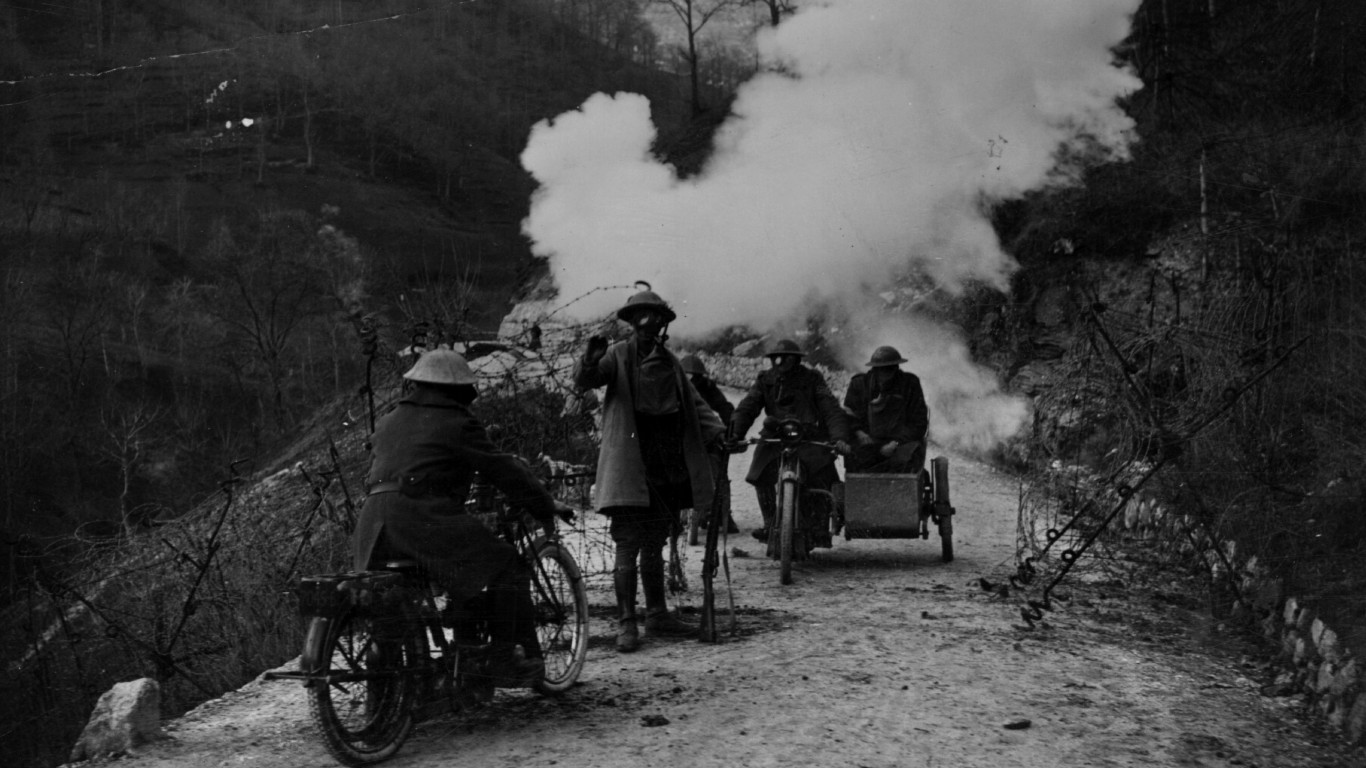
DP – Diphosgene
> Type: Choking agent
> First produced: 1916
> Notably used during: World War I
> Effects: Burning sensation, chest tightness, sore throat, coughing, labored breathing, shortness of breath, fluid buildup in the lungs, symptoms may be delayed
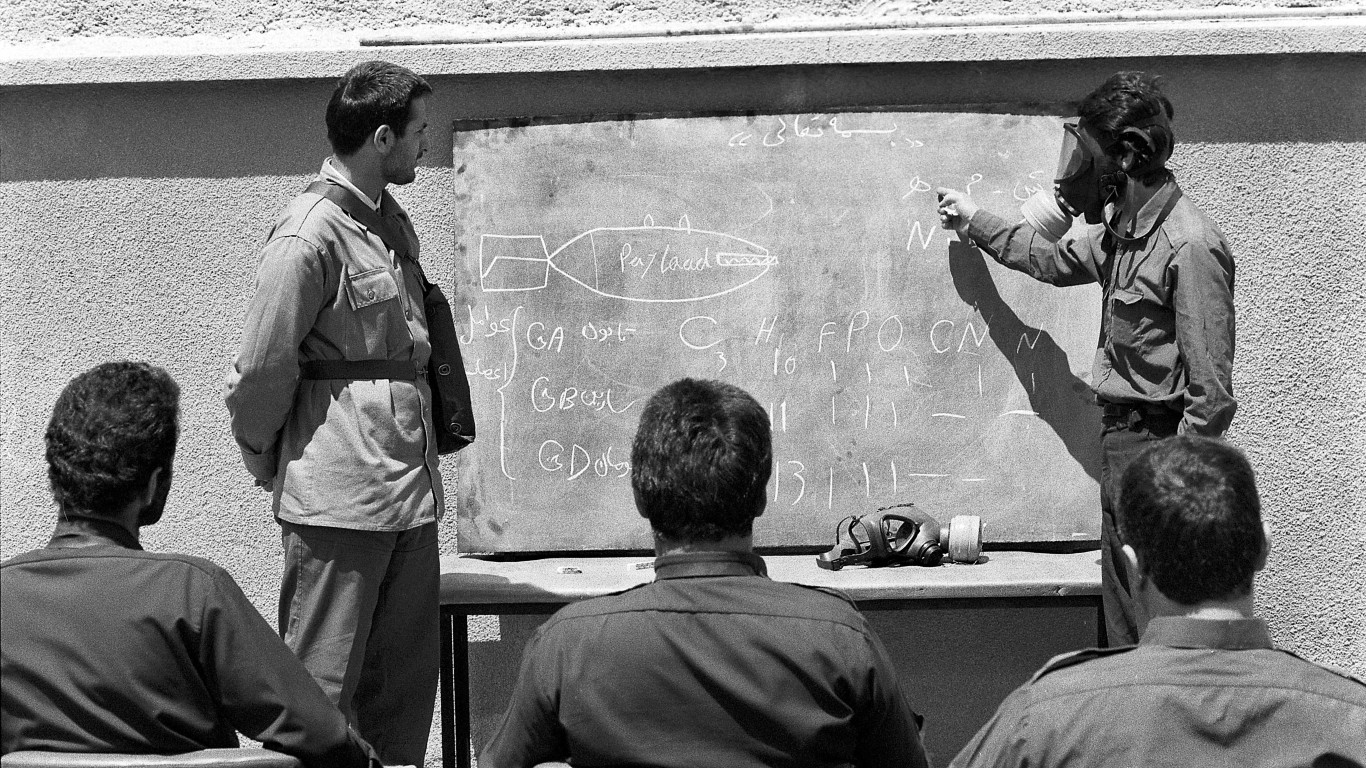
GA – Tabun
> Type: Nerve agent
> First produced: 1936
> Notably used during: Iran-Iraq War
> Effects: Very low or high blood pressure, blurred vision, chest tightness, confusion, drooling, excessive sweating and urination, vomiting, pinpoint pupils, muscle twitching, loss of consciousness, seizures, paralysis, respiratory failure possibly leading to death
[in-text-ad-2]
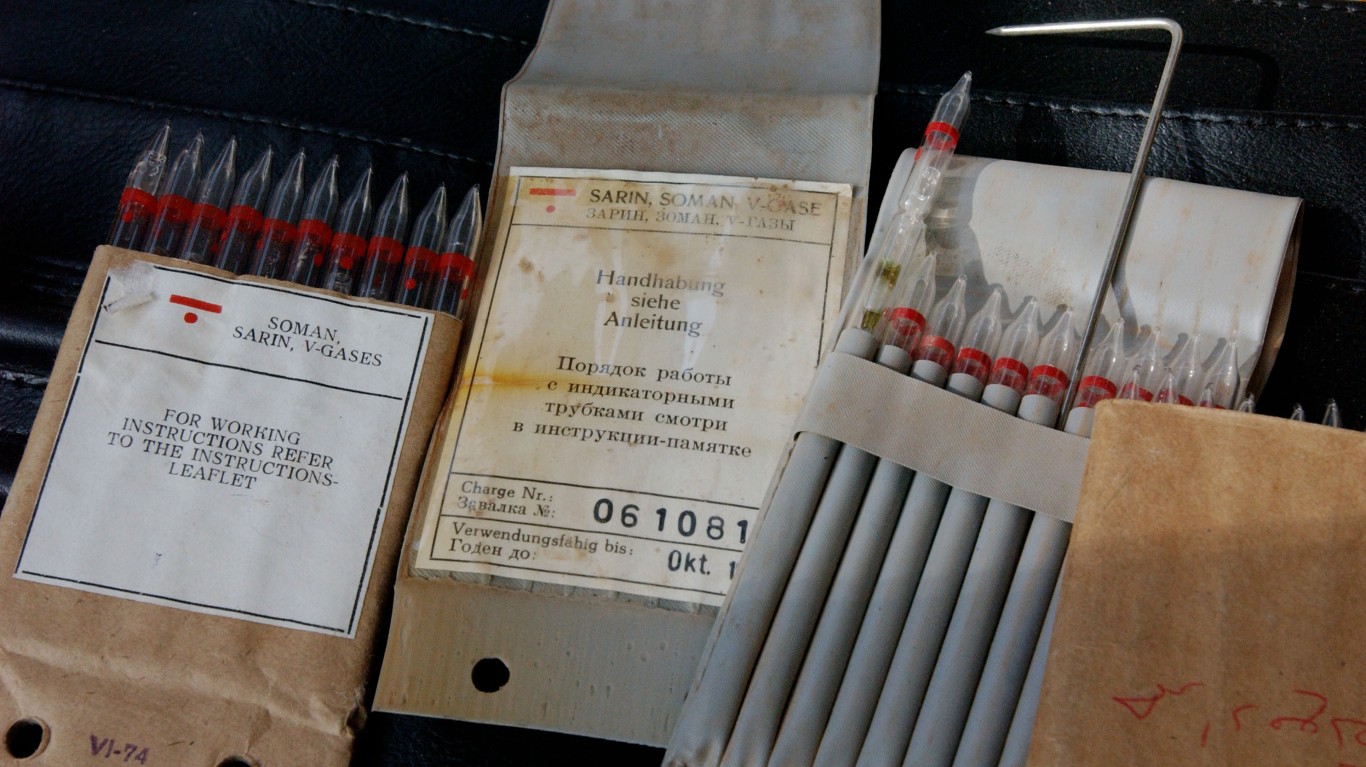
GB – Sarin
> Type: Nerve agent
> First produced: 1937
> Notably used during: Iran-Iraq War
> Effects: Very low or high blood pressure, chest tightness, confusion, drooling, diarrhea, vomiting, difficulty breathing, muscle cramps, pinpoint pupils, tremors, loss of consciousness, coma, seizures, paralysis, respiratory failure possibly leading to death, cardiac arrest possibly leading to death
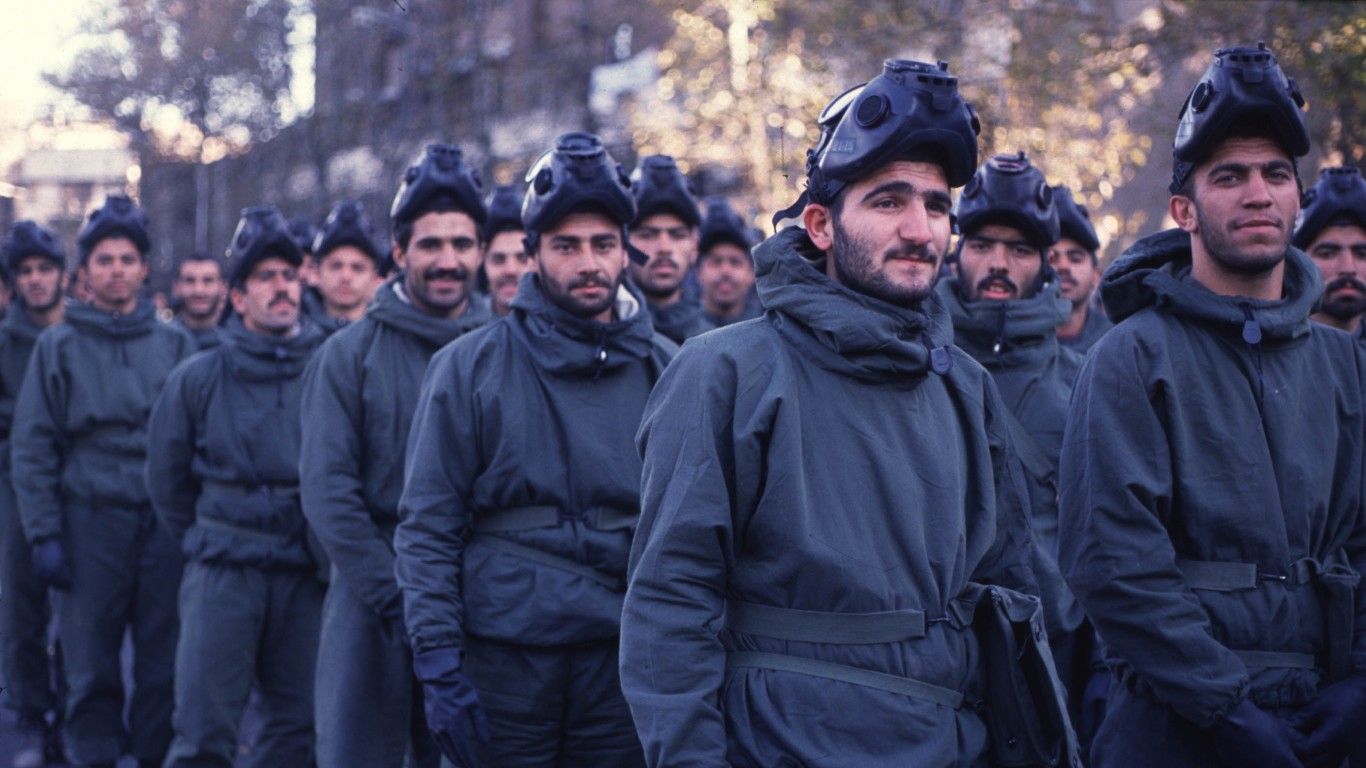
GD – Soman
> Type: Nerve agent
> First produced: 1944
> Notably used during: Iran-Iraq War
> Effects: Very low or high blood pressure, blurred vision, chest tightness, confusion, drooling, excessive sweating and urination, vomiting, pinpoint pupils, muscle twitching, loss of consciousness, seizures, paralysis, respiratory failure possibly leading to death
[in-text-ad]

GF – Cyclosarin
> Type: Nerve agent
> First produced: 1949
> Notably used during: Iran-Iraq War
> Effects: Reduction in pupil size, tightness of chest, difficulty breathing, headache, drooling, muscle twitching, nausea, vomiting, weakness, loss of consciousness, convulsions, temporary cessation of breathing, paralysis, copious nasal secretions, involuntary defecation and urination, coma, death

HD – Sulfur Mustard (Yperite)
> Type: Blister agent
> First produced: 1917
> Notably used during: World War I
> Effects: Abdominal pain, blistering of skin (yellow in color), bloody nose, decreased red and white blood cells and platelets, difficulty breathing, eye symptoms including temporary or permanent blindness, skin symptoms, seizures, respiratory failure leading to death
PS – Chloropicrin
> Type: Choking agent
> First produced: 1917
> Notably used during: World War I
> Effects: Abdominal pain, cough, diarrhea, dizziness, headache, nausea, sore throat, vomiting, weakness, skin and/or eye irritation and pain
[in-text-ad-2]
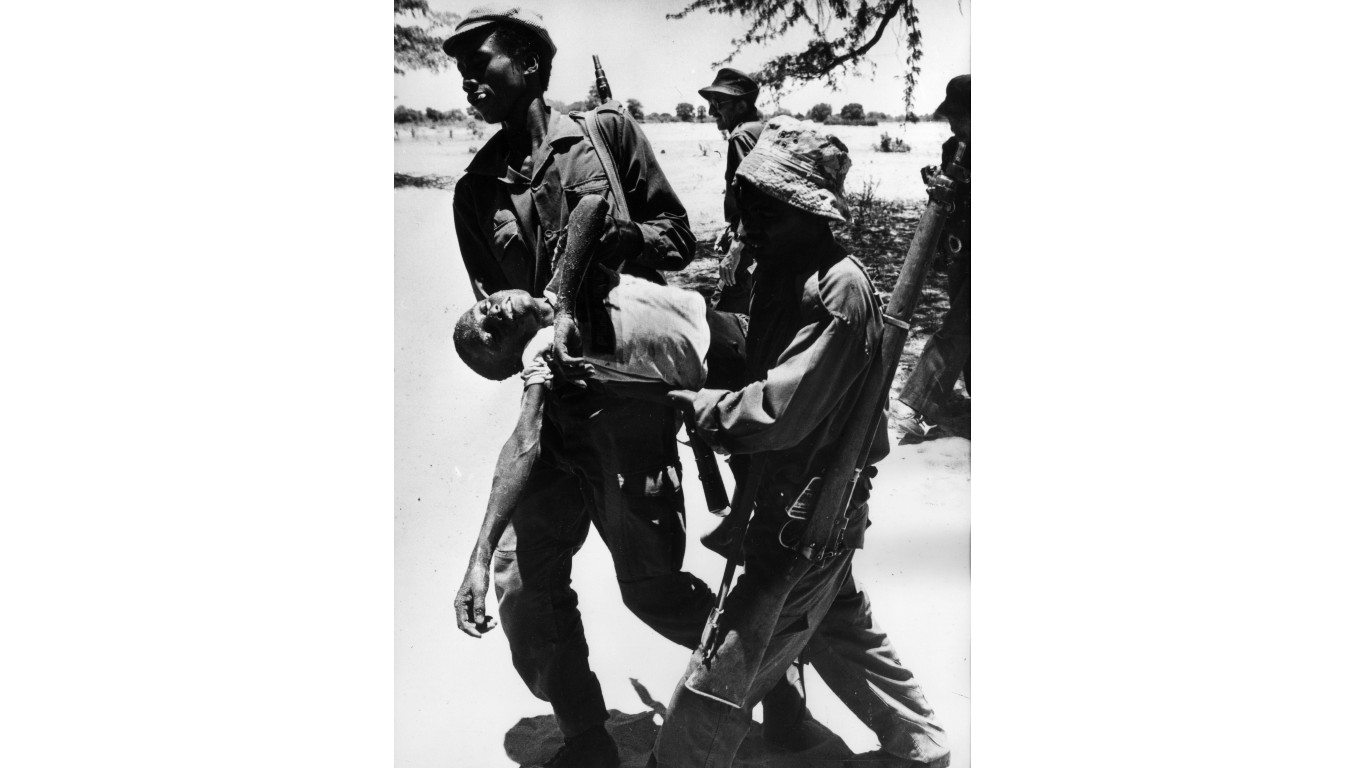
VX – Methylphosphonothioic Acid
> Type: Nerve agent
> First produced: First produced in the 1950’s
> Notably used during: Angolan Civil War
> Effects: Abnormally low or high blood pressure, blurred vision, chest tightness, confusion, drooling, slow or fast heart rate, muscle cramps, vomiting, rapid breathing, pinpoint pupils, tremors, wheezing, loss of consciousness, coma, seizures, paralysis, respiratory failure possibly leading to death, cardiac arrest possibly leading to death
Methodology
To determine the deadliest gases used in war, 24/7 Wall St. referenced the report Types of Chemical Weapons from the Federation of American Scientists, a nonprofit policy research and advocacy organization. Chemical weapons are ordered alphabetically according to their NATO weapon designations, which is a one to three letter combination that proceeds the name of each gas. Only agents that have been used against people on a large scale, according to medical and historical sources such as the Centers for Disease Control and Prevention, were included.
Information on the type of chemical agent and notable conflicts when it was used came from different sources. Information on the effects of the gas on humans came mostly from the CDC. It is important to note that symptoms may vary depending on the method of exposure (inhalation, skin, eyes, ingestion) and on the amount exposed to. Only a sample of symptoms are included and some may only develop due to large or long exposure and no treatment.
Retirement can be daunting, but it doesn’t need to be.
Imagine having an expert in your corner to help you with your financial goals. Someone to help you determine if you’re ahead, behind, or right on track. With SmartAsset, that’s not just a dream—it’s reality. This free tool connects you with pre-screened financial advisors who work in your best interests. It’s quick, it’s easy, so take the leap today and start planning smarter!
Don’t waste another minute; get started right here and help your retirement dreams become a retirement reality.
Thank you for reading! Have some feedback for us?
Contact the 24/7 Wall St. editorial team.